Meanwhile, back in the expo room, dealers in all types and gauges* of models were buying and selling and working the crowds, so I drifted that way to see those machines and a couple of other layouts in smaller sizes, Ns and HOs and a table of Z-gauge, which I’d heard of but never seen. Z-gauge is some tiny stuff; the average car looked to be maybe an inch and a half or two inches long, no bigger. The World on a card table.
*(Train models, like trains themselves, come in different sizes, referred to as “gauges.” It’s a reference to the distance between the rails. There are a bunch of them and I have no idea what all the designations are or what size is which.)
Although there were a few layouts and some very nicely detailed and painted train sets,
![]()
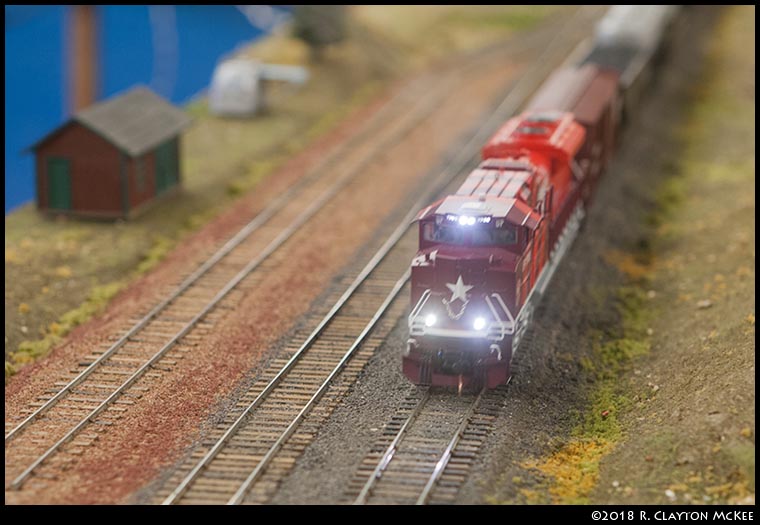
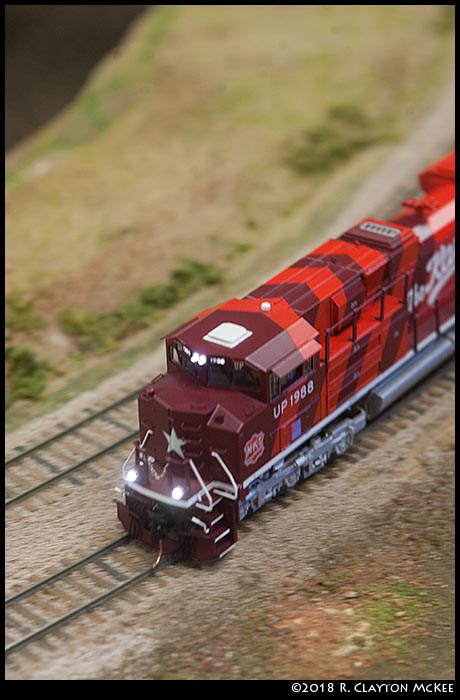
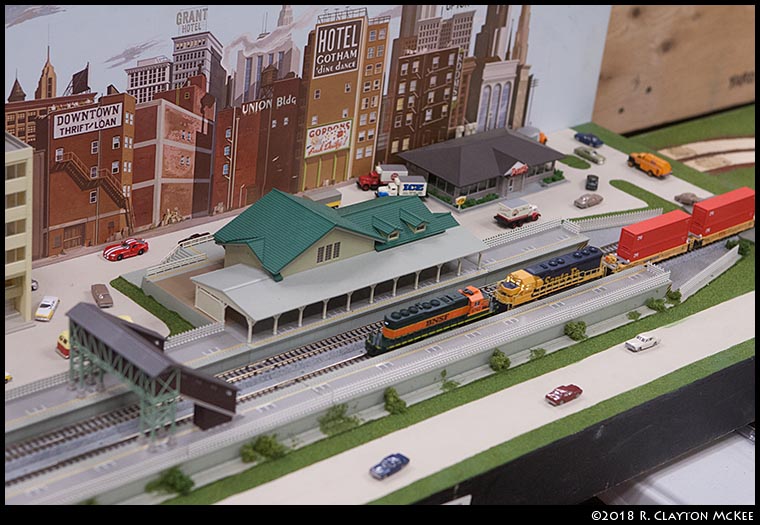
![]()
the bulk of the room was given over to displays of all sorts and sizes of model trains for sale.
![]()
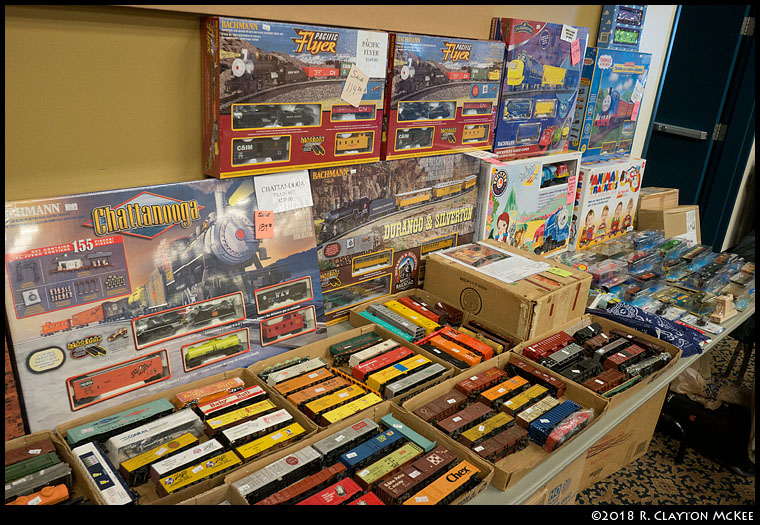
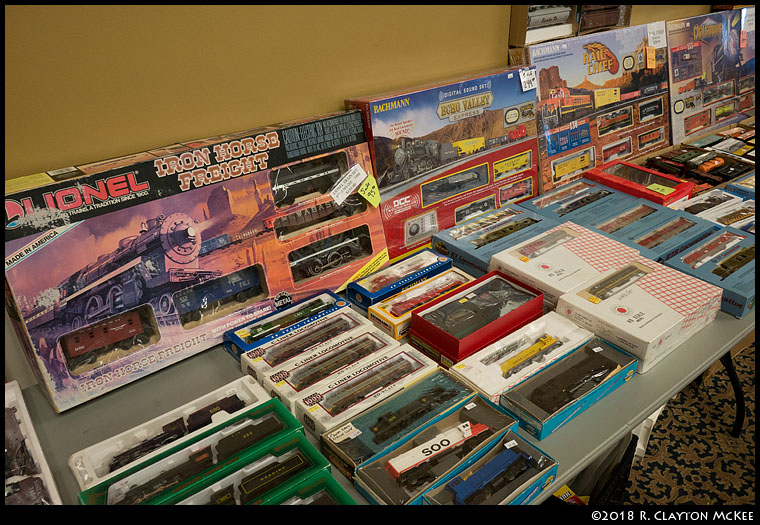
Sale tables included vintage and modern cars and collectible trainsets, plus layout supplies, model buildings and props – trees, cars, people.
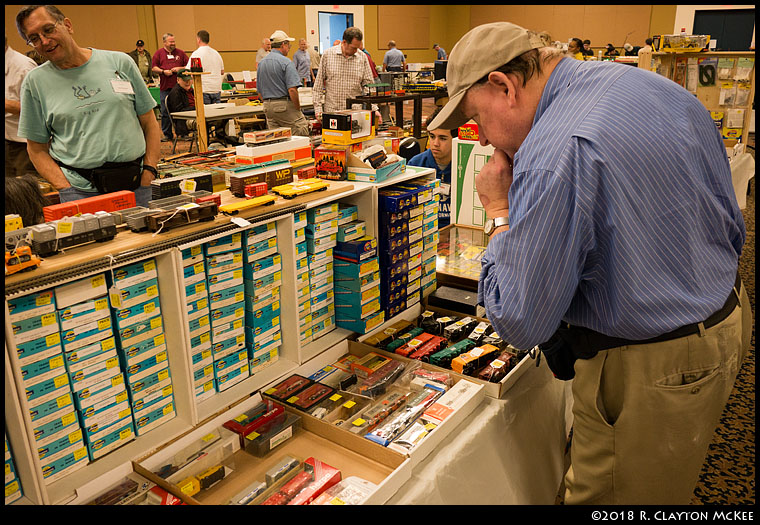
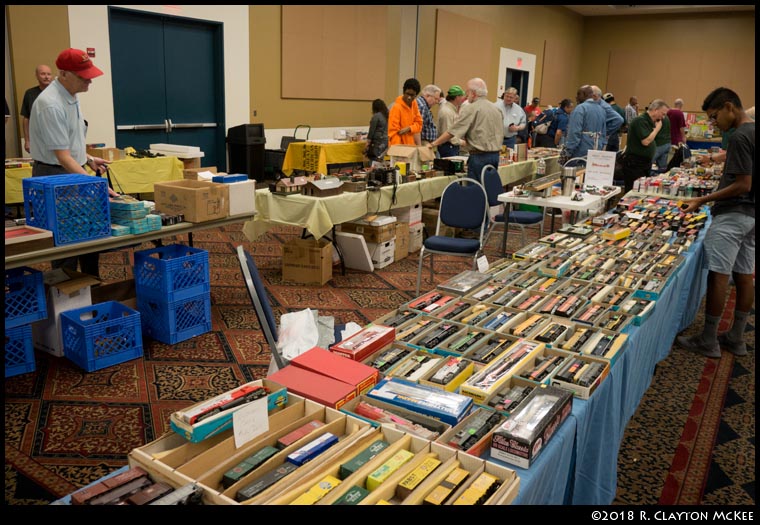
Other tables featured memorabilia, train art, railmen’s lanterns, literature, carved wood toys, and all sorts of other train stuff.
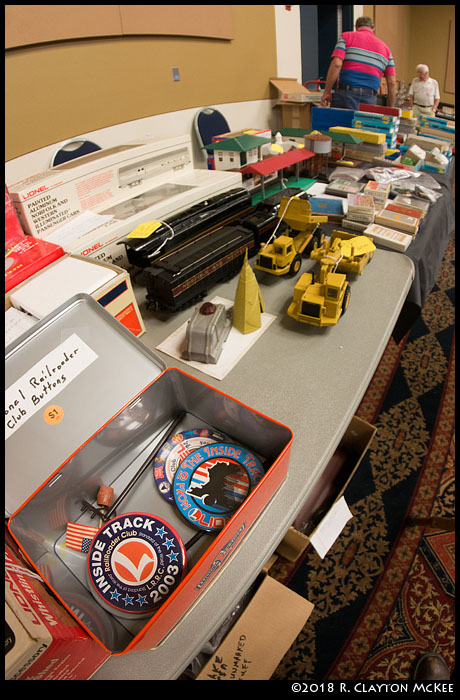
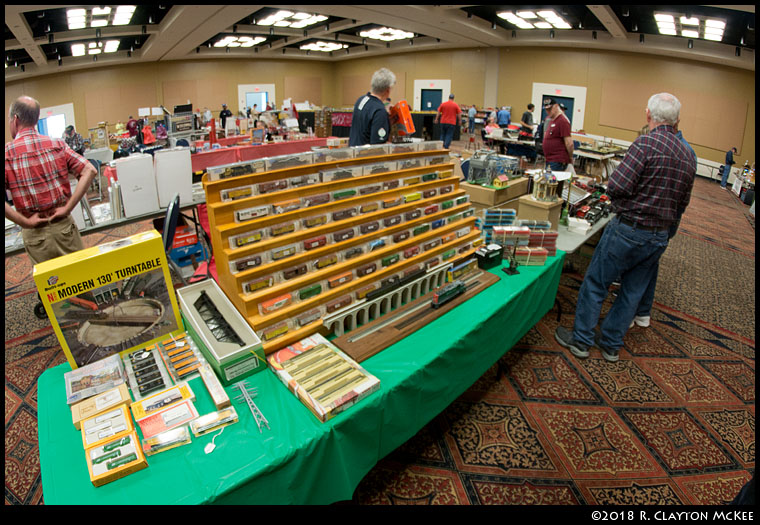
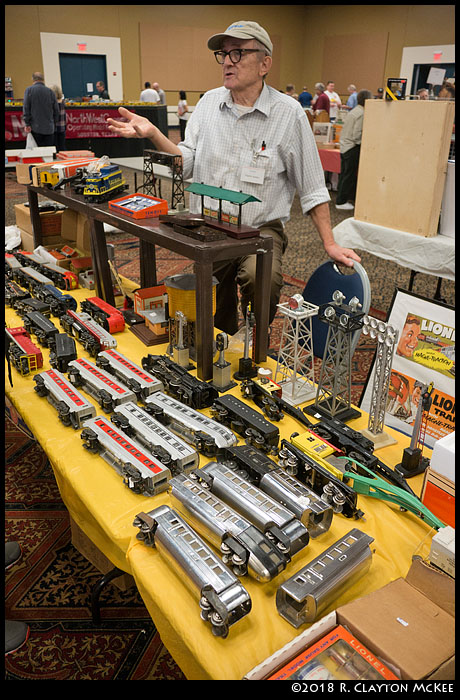
![]()
Notice that shiny 5-car stainless steel train stack in the foreground there, the one with the silver-and-black engine at the top? That’s a Lionel O-gauge Flying Yankee. The Flying Yankee, one of the stars of the Boston & Maine line during the 1930s and 40s, was a “Streamliner” train, one of a number of beautiful art deco relics which are sadly no longer in service. I consider these to be some of the most beautiful vehicles ever created. The phrase that pops to mind is “retro-futuristic.” They’re sleek, elegant, fast, something out of a Buck Rogers view of what our future might have been. It’s enough to make me wish to have been able to ride on one, just once. Happily there’s an active restoration project now, which aims to recreate the train as a rolling museum, so I may someday get my chance. I’ll keep hoping.
Information on that project is at the Flying Yankee website, along with art and some wonderful videos. There are also several videos of the Flying Yankee and the models on YouTube; they’re worth looking at if only for What Might Have Been…
The San Jacinto Model Railroad Club meets at the Bayland Park Community Center (Bissonnet just off Hillcroft) on the first Tuesday of the month, except in December.
2/28 Edit:
Just noticed that I did, once again, leave off the Obligatory Commercial Note. Still not too good at this “MONETIZE” stuff. But then, that’s kind of okay because most of you people don’t seem too hot at the “throw money at the photographer” part, either. (We’re all cool. Only if you feel so inclined should you do so…)
(Obligatory Commercial Note: Prints of most of the pictures here (in fact, most of the pictures on this blog) are or can become available for purchase through my space at Fine Art America. If it should happen that you’re more interested in photos printed on shirts, tote bags, pillows, shower curtains, or other strange kitschy stuff, they do that too… and some of the stuff (by no means all, but some – usually I don’t judge but even pigs gots to have SOME standards) is available in that format too. If you’re looking for something and it’s not on the FAA site, drop me an email. Yes, it’s a commercial enterprise, but (a) they take plastic, which I’m not otherwise able to do, and (b) I, and therefore you, get _far_ better prices than I can offer if I have to do all the back end stuff myself. Thank you for your patronage. Yes, I’m trying to turn some of this into a money-making enterprise, or at least pay FAA’s far-from-exorbitant fees.)
(Late Edit: At the bottom of the page here is a box for you to sign up to receive email updates when we post here. ESPECIALLY if you’re coming here from a FaceBook link, I’d appreciate it if you’d use that. You won’t be sold or spammed, and when I leave Facebook (soon) we won’t completely lose touch. Thanks.)